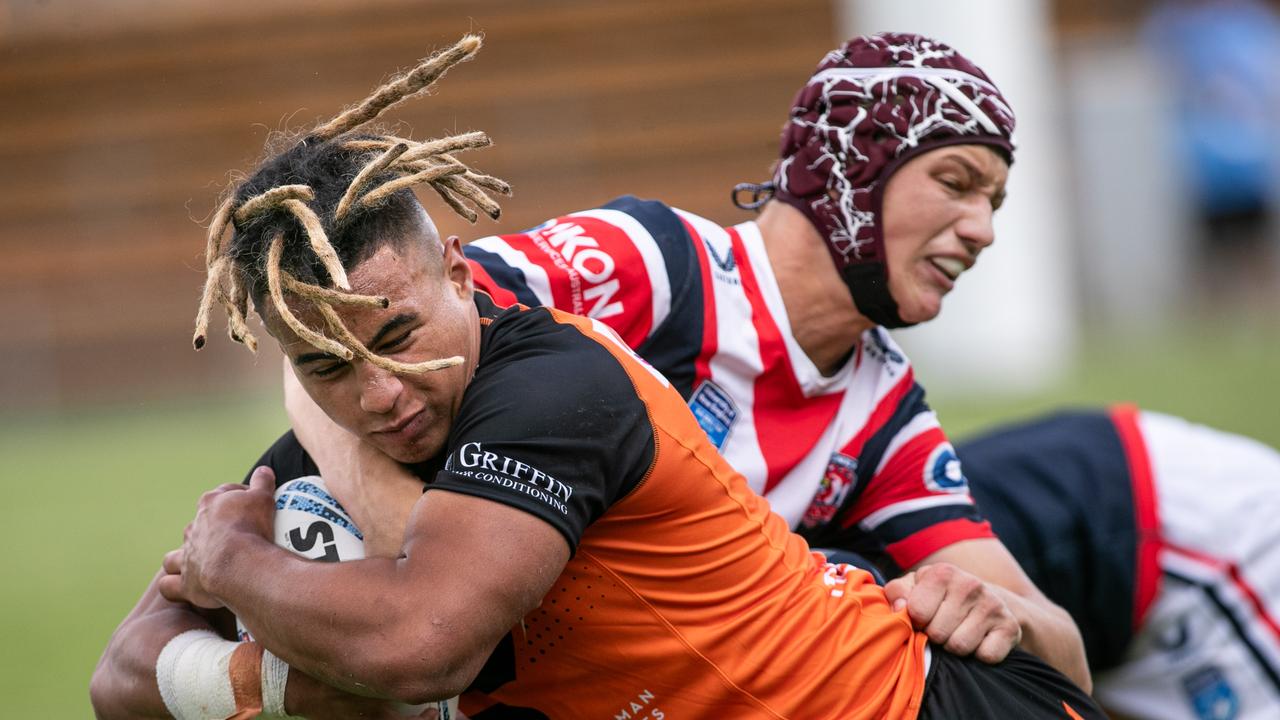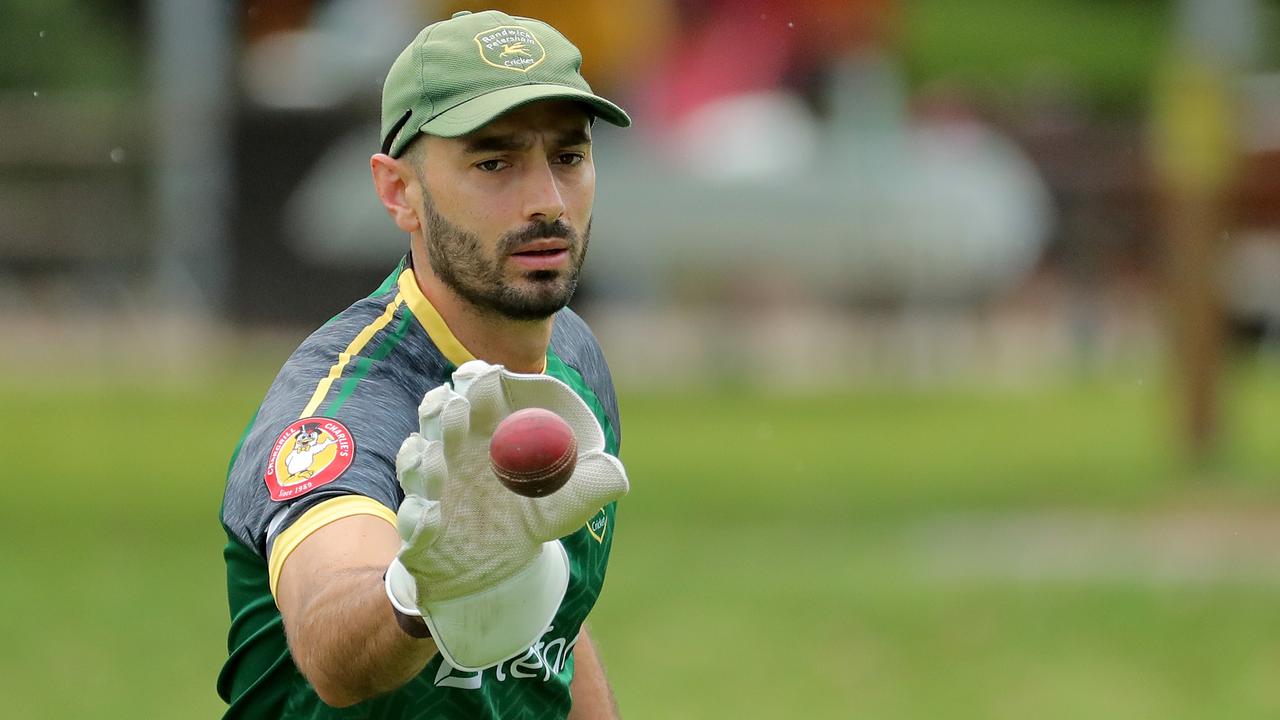‘Dynamics are shifting’: How T20 is shaping Australia’s next-gen spinners
Despite predictions that it would kill off spin bowling, T20 has led to a resurgence in it. Find out how white-ball cricket is shaping Australia’s next generation of tweakers.
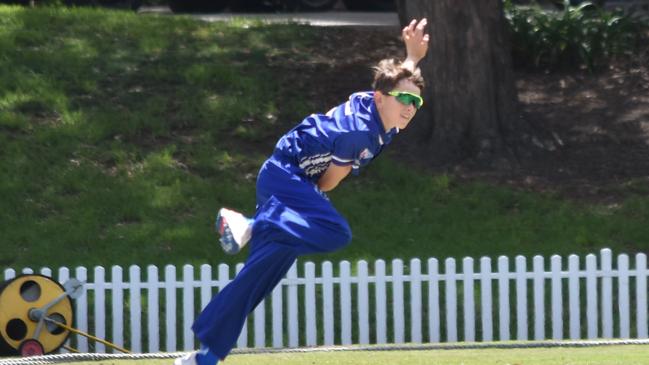
Local Sport
Don't miss out on the headlines from Local Sport. Followed categories will be added to My News.
At a school holiday cricket camp at Seven Hills in Sydney’s west, T20s are all the rage.
Fresh from watching the BBL final, which saw local side the Sydney Thunder go down to the Hobart Hurricanes, the young cricket fanatics are busy talking about and trying to emulate what they saw over the course of the tournament.
Hurricanes grand final hero Mitchell Owen is getting dropped in plenty of conversations after his record-breaking knock, Glenn Maxwell is pretty popular, although Sam Konstas is without doubt the fan favourite.
And while the influence T20 has had on batting is clear to see here among the kids, another aspect of the shortest form of cricket is also having its impact felt at junior level.
“We’re actually running a camp at the moment and out of the 40-odd kids, probably a quarter of them want to bowl spin,” said Luke Dempsey, a Parramatta grade cricket veteran who in addition to running the The Hills Cricket Academy also coaches Parramatta’s under-16s team in the prestigious Green Shield competition.
“In our under-13s here, they’re all trying to bowl left-arm spin, very similar to Steve O’Keefe.”
THE T20 SPIN REVOLUTION
It is an interesting development for spin bowling, which over the past 20 years has endured quite the rollercoaster ride since T20 cricket burst onto the scene.
From initial fears that the bash and smash form of cricket would kill off the art, spin bowling has emerged as the one of the most effective weapons in the white-ball game in recent years.
Indeed, after a slow start in which a frontline tweaker wasn’t even selected until the third T20 international, the influence of spinners has grown exponentially.
Analysis from The Cricket Monthly found that spinners bowled a record 41.7 per cent of overs in the 2023 IPL – almost double the 23.2 per cent in the inaugural event in 2008.
And although much of this is dictated by the conditions – with spinners playing a reduced role in the most recent 2024 tournament – the general direction of travel is clear, with nine of the top 13 wicket-takers in IPL history being tweakers.
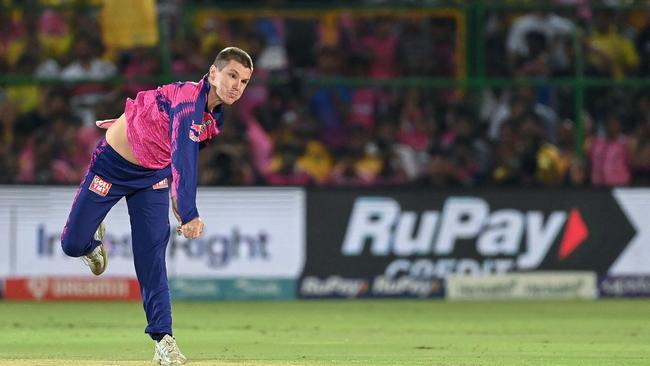
Spinners also seem to have been more economical in recent times. Stats from ESPN cricinfo show that between 2016 and 2024, spinners had a better economy rate than quicks in not only T20 internationals but also each of the following domestic leagues: the BBL, CPL, IPL, PSL and SA20.
This trend is even more pronounced in women’s cricket.
Analysis from journalist Jarrod Kimber on the Good Areas platform highlighted how in the post-Covid era, 47 per cent of deliveries in major T20 competitions around the world were bowled by spinners, compared with 38 per cent for men.
Female spinners also bowled twice as often in the death overs – one of the most crucial parts of T20 cricket – than their male counterparts over the same period.
In fact, spin absolutely dominated in the most recent WBBL. The top-nine wicket-takers in the competition were all spinners, which is remarkable given the traditionally pace-friendly nature of Australian pitches.
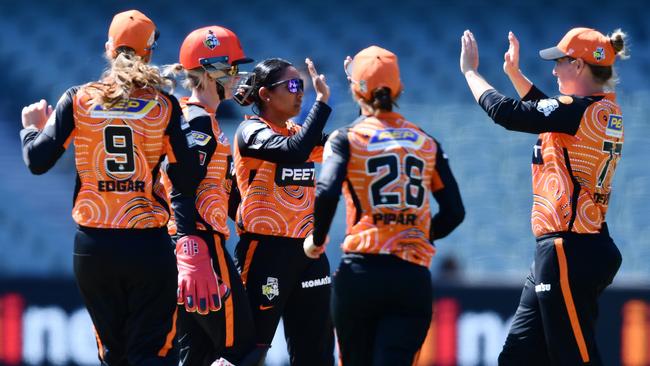
While the reasons for spin bowling’s success are many and varied, with fundamentals like the quality of bowler, state of the pitch and stage of the game all key factors, there are nevertheless some common theories.
One is that taking the pace off the ball puts the onus on batters to generate more power, meaning that mistimed shots are more likely to hand in the hands of fielders rather than reach the boundary.
The ability to mix things up is also key, with spinners seen as having the edge over quicks when it comes to variety. Subtle variations in flight, pace, dip and turn have proved effective when batters are going for broke and trying to score quickly and put the ball into the grandstand.
LOCAL CRICKET TAKING THE LEAD
Although the effectiveness of spin bowling at the professional level has been spoken about for a few years now, it’s clear that this phenomenon has well and truly made its way down the cricketing pyramid.
In this summer’s men’s Regional Bash, the NSW T20 country championships, Newcastle’s victory was underpinned by the side’s incredible five-pronged spin attack.
The quintet – consisting of off-spinner Nick Foster, leggies Aaron Bills and Daniel Chillingworth and left-arm orthodox pair Dylan Hunter and Adrian Isherwood – took a remarkable 25 of the team’s 30 wickets over the course of three-game knockout tournament, with quicks (two wickets) accounting for remarkably fewer wickets than runouts (three).
“We’re a little bit blessed with that sort of stuff in Newcastle at the moment. Those five spinners, they’ve all played for NSW Country, so it’s a bit of an embarrassment of riches, really,” said Newcastle and NSW Country skipper Nick Foster.
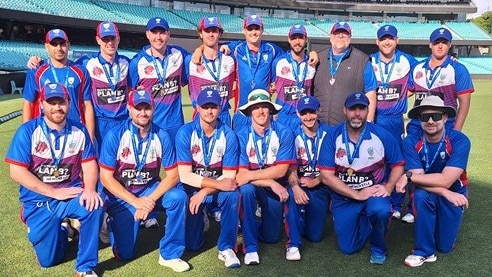
“I think it has served us really well. And it’s not as if we’re bowling spin for the sake of it; it’s genuinely where our strength lies. We’ve got five really quality spinners, it’s a case of bowling your best bowlers and as captain that’s the way I’ve approached it.”
There are similar stories at junior level. While many of an older generation may remember having one or, at a stretch, two spinners in their junior teams, it’s certainly a different story these days.
“You used to have one leggie or an offie. In my junior team we had a leggie and an offie, and normally the offie would bat,” said Dempsey, who as Parramatta Green Shield coach has had a first-hand view as to how things have changed.
“This is the first year we have only had two; normally we have three or four and one of them will bat. We played Sydney Uni this year in the semi, they did really well and they had four gun spinners.”
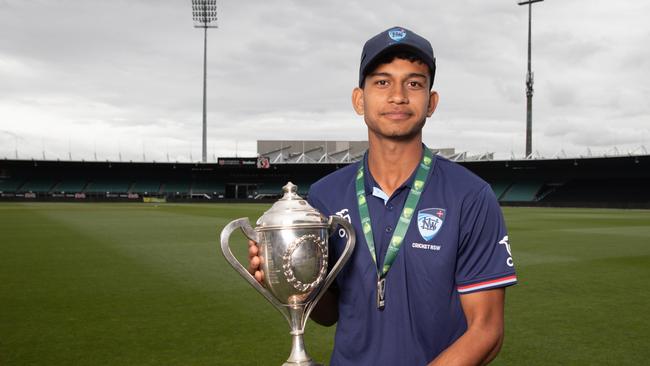
Similar trends have played out in the elite pathways, and beyond T20s. At the recent male under-17 national (one-day) championships, winning team NSW Metro took three frontline spinners into each game.
The tweakers took 27 wickets over the course of tournament, just two behind the quicks with 29.
And although this is just one example, it highlights a trend that exists across the board to varying degrees: in Australia, the land of the great fast bowler, bucketloads of talented spinners are coming through the system – and are having a lot of success in the process.
‘KIDS WORKING ON A DOOSRA’
And while such a spin-heavy approach might not always be the norm at professional, representative or even local club level, it is nevertheless a sign of how effective spin can be in T20 cricket.
“There was certainly a perception at the beginning that spin was going to struggle in T20 but I think it was fairly obvious early on that spin was going to play a really important role,” said Newcastle rep captain Foster.
“But I suppose to counter that, I think good spin is going to play a really important role. I don’t think there’s a lot of value in just your mediocre part-timer but I think having quality spin options is going to serve teams well,” he added.
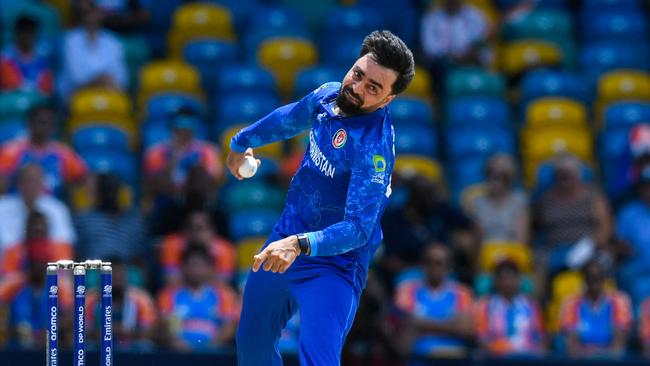
“The other thing that’s happened is the way people bowl spin has evolved with T20. You’ll find there are a lot more spin bowlers who bowl into the wicket, a bit flatter, faster, as opposed to the old traditional style of spinner like your Tim May where they’d try to beat the batter with flight and guile. It’s much more about targeting the stumps, faster-paced, into-the-wicket type stuff.”
Indeed, research on T20 bowling has found that the more successful spinners are bowling shorter, faster deliveries that more often than not attack the stumps.
There is also a big focus on variation, with changes of pace, flight and the ability to spin the ball both ways considered key parts of a modern T20 spinner’s armoury.
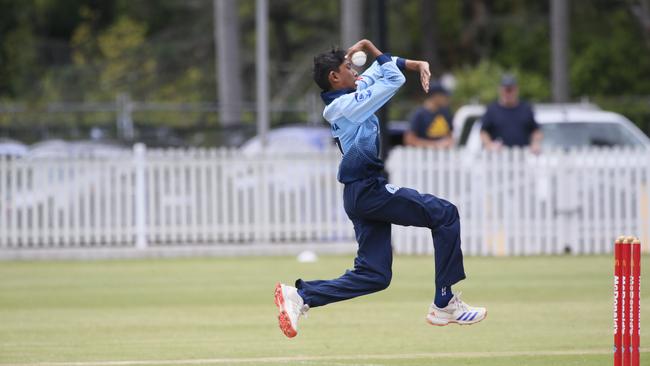
Back at Seven Hills, this influence is on show for all to see.
“We’ve definitely noticed there’s been an influx of kids bowling mystery balls,” said Dempsey.
“You’d watch a kid bowl off-spin previously and he’d bowl his offie and then have an arm ball, whereas we had two or three kids the other night working on a doosra.
“That was never really a thing before, but now with all this T20 stuff and different types of spinners coming through it’s definitely something that the kids are looking to do.”
The search for variety has even manifested in some quite remarkable ways.
“We’ve got one in our private academy at the moment who bowls both arms,” said Dempsey. “So he bowls left-arm ortho and then bowls right-arm off-spin. He’s only 12 but he’s definitely going to be a kid who’s on the radar.”
GETTING A CRACK
While the proliferation of ramp shots in junior cricket games this summer could well be attributed to Sam Konstas and his MCG exploits, the reasons behind the increase in juniors taking up spin could well be attributed to something more pragmatic: opportunity.
“I don’t think it’s what they’re watching on TV, I think it’s more about where they think they’ll get into squads and teams that they’re potentially not going to get into as a ‘med’ (medium-pace bowler),” said Dempsey.
“So we’ve got a lot of kids at our academy who are changing and thinking, ‘You know what, I’m probably not going to be able to bowl 130/140, I don’t have the athleticism for that, so I’m turning to spin.’ And then they’re working on their craft and some of them are getting quite good. Even our (Parramatta) first grade spinner was the same – he was a medium-pacer who turned into an off-spinner and he’s doing really well.
“They’re seeing themselves, and probably from watching (T20 cricket) as well, that spinners are actually getting a lot more opportunities than what pace bowlers are going to get.”
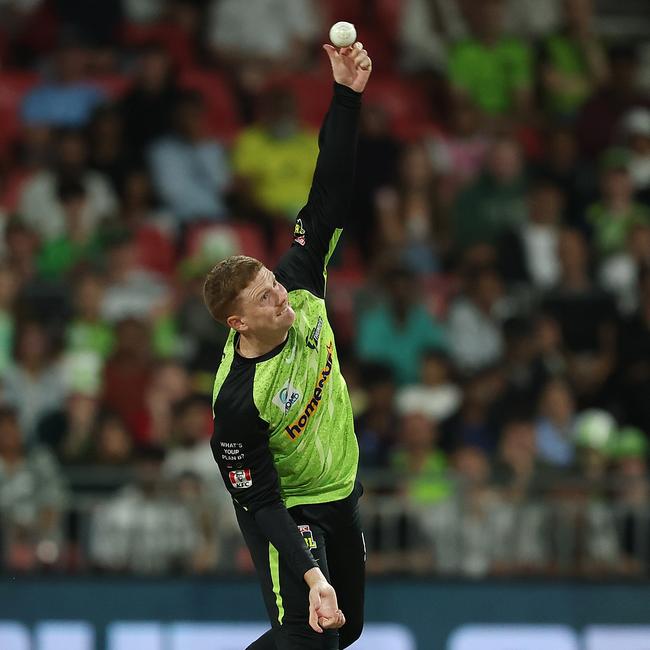
And these opportunities mean that the gap between grade and professional cricket is narrowing dramatically for some young tweakers, who in previous decades may have been forced to wait years before getting a shot as the lone spinner at Sheffield Shield or domestic one-day level.
“At Parra at the moment we’ve got a real up-and-comer who’s playing first grade at 18 and I dare say he’ll be playing Big Bash in the next two years,” said Dempsey.
“If you look at (Tom) Andrews playing for the Thunder, not many people have heard of him but he’s come in with his left-arm finger spin. And while he might have been playing on wickets that have definitely helped him, he’s done well and it’s something that’s become a bit of a must in a T20 team.”
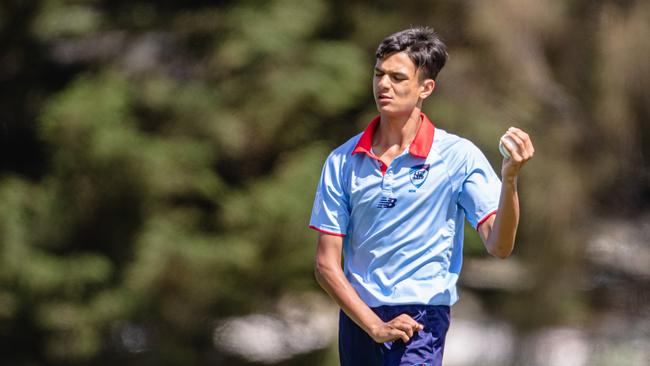
Also contributing to the trend, in Dempsey’s eyes, are broader social factors.
“Because the demographics of the game are changing, particularly in Western Sydney, you’re getting a lot more kids of Indian and Sri Lankan descent playing.
“(Fellow academy coach) Nick Bertus and I went to India last year and it’s safe to say that it’s not very enticing to be a quick over there, so a lot of them pick up spin. And because many of these kids’ parents have come from this background, I think that’s why a lot of them are picking up spin. That’s my take on it.
“We watched one IPL game over there and the players who looked the most dangerous were the spinners, unless they were overseas quicks bowling 150.”
TWEAKING THE FUTURE
Looking into the crystal ball in any walk of life is more often than not a fool’s game, but spin appears likely to remain a key part of white-ball cricket, especially T20s, for the foreseeable future.
If this trend continues one could safely assume we’ll see more tweakers in the national jersey or lighting up the Big Bash in the summers to come.
However we are likely to see specific types of spinners: those who bowl faster, shorter, zippier deliveries, with left-arm orthodox tweakers particularly in demand. Think more Rashid Khans and Adam Zampas than Shane Warnes. More Matt Kuhnemanns and Shakib Al Hasans than Stuey MacGills.
Outside of T20 cricket, and especially in the red-ball game, it is difficult to predict how these trends at both professional and junior level will manifest in the coming years.
But what is clear is that from Seven Hills to the IPL and beyond, spin bowling is in rude health – and for that we have T20 to thank.
“We’ve definitely found that a lot of the boys are more interested in the T20 aspect right now, to the point where we’ve got a kid in the Green Shield who’s probably just about the best player I’ve seen come through at Parramatta for the last 15 years – and all he wants to do is play Big Bash and IPL,” said Dempsey.
“And that’s where things are shifting and changing for the younger kids. I know when I was growing up all I wanted to do was play for Australia. But that’s changing as the dynamics are shifting.”



